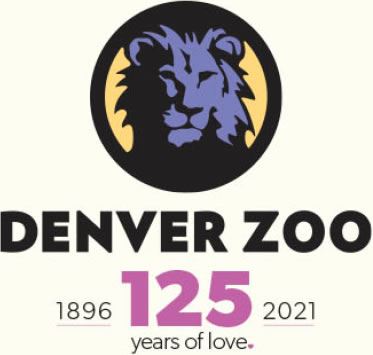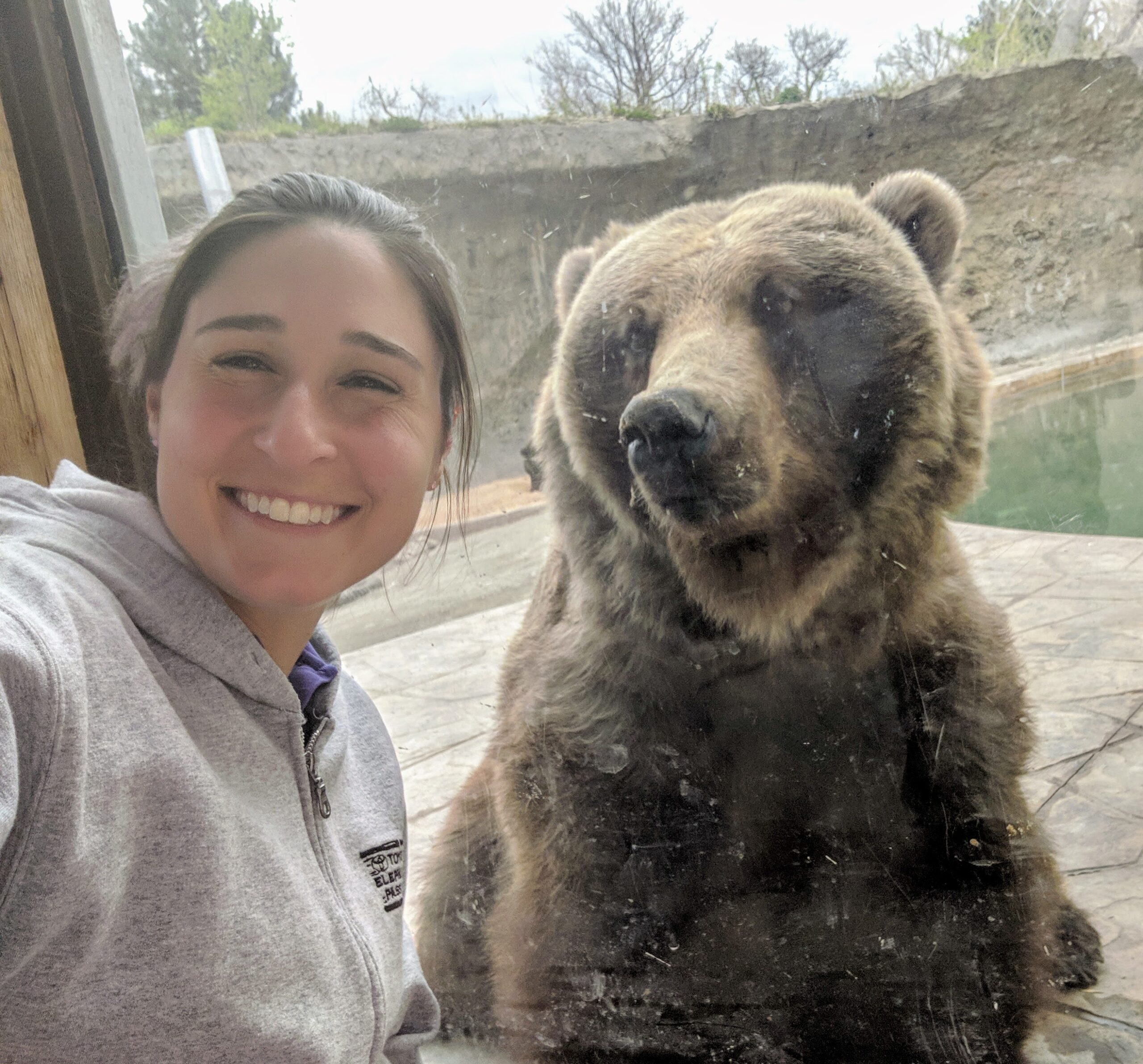I’ve been a zookeeper at the Denver Zoo since 2018 and although I’m now a Float Keeper working in multiple animal departments, I was originally hired as a Carnivore Keeper. No matter which of our wonderful animals I’m working with, training is one of the most rewarding parts of my job. I have already made so many amazing memories here, but the ones that stand out to me are with Tundra the grizzly bear and Spock the Kirk’s dik-dik.
TUNDRA: Last year, I worked closely with Tundra while training her for a voluntary blood draw. This kind of training is important because it enables us to conduct essential health and wellness testing while giving the animals the choice to participate in their own health care. Even when the Zoo was closed due to COVID-19, Tundra and I continued our training every day; she helped me through that stressful time and I looked forward to seeing her beautiful face.
After much hard work, Vet Tech Eva and I successfully drew blood from Tundra—marking the first time that blood was drawn from a bear though voluntary training at the Denver Zoo. Tundra did amazing, and it was incredibly rewarding to have reached this important milestone together.
SPOCK: Our geriatric dik-dik (which is a tiny antelope) was the only hoofstock species in the Carnivore department—but that just made me love him even more. Spock only weighs about 11 pounds, and as a prey animal, he is very aware of his surroundings. He can be flighty if startled by sudden movements or loud noises, so training with him is different from training with large carnivores.
Patience and building a positive relationship were important to being successful when training with Spock. I started by target training him—asking him to put his nose on a ball at the end of a stick. This simple behavior earned him treats, strengthened our relationship, and allowed me to ask him to walk from one spot to another so we could monitor his movement (helpful when working with an older animal). Once established, I was able to use his target behavior as the first step in training more advanced tasks like entering a crate.
Crate training Spock ended up being a team effort—the Carnivore team worked on making the crate a positive space where he could get tasty snacks and feel safe, instead of thinking it was a scary box. When it came time for an examination at the Veterinary Hospital, we were thrilled to see that Spock walked into the crate on his own, allowing us to easily transport him in a stress-free manner. He even repeated the behavior a week later for his follow-up appointment, which was a huge victory. It was so rewarding to see all our hard work pay off!



